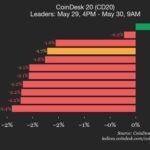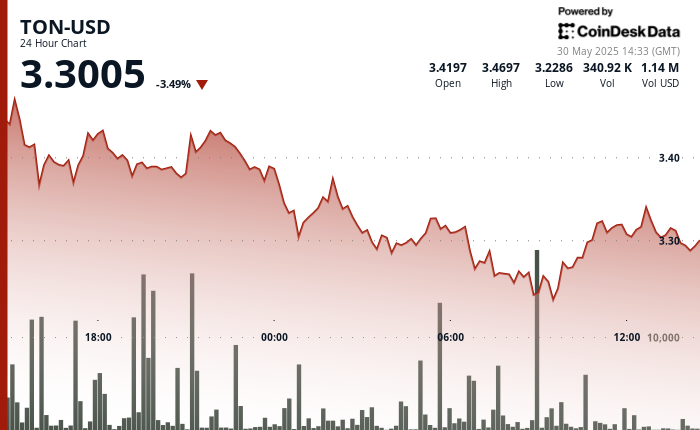
Bitcoin Rises Near $100k as Treasury, Not Federal Reserve, Fuels Liquidity
Reasons for Confidence
Rigorous editorial standards emphasizing precision, relevance, and neutrality.
Developed by professionals in the field and thoroughly vetted.
Commitment to the highest levels of integrity in news coverage and publication.
Rigorous editorial standards emphasizing precision, relevance, and neutrality.
Morbi pretium leo et nisl aliquam mollis. Quisque arcu lorem, ultricies quis pellentesque nec, ullamcorper eu odio.
Arthur Hayes, the co-founder of BitMEX and head of Maelstrom Capital, believes that the US Treasury—not the Federal Reserve—plays a crucial role in driving the current bull market in risk assets, particularly Bitcoin. In a recent live-streamed discussion, Hayes suggested that traders should prioritize statements and data from the Treasury’s quarterly refunding details over anything said by Powell.
He asserted that “Powell has been inconsequential for quite some time,” downplaying the Fed chair’s decision to maintain the federal-funds rate at 4.25% to 4.50% for a third consecutive meeting. “The crucial developments are happening within the Treasury. […] Pay attention to Bessent. Dismiss Powell. He’s becoming irrelevant,” Hayes stated.
Hayes bases his argument on a liquidity trend that emerged in the latter half of 2022. He recalled that then-Treasury Secretary Janet Yellen identified “two-and-a-half trillion dollars of excess funds in the Fed’s reverse repo mechanism” and redirected issuances toward short-term Treasury bills. According to Hayes, this action drew idle cash from the Fed and “infused it into the global money markets,” sparking a widespread market rally that benefitted equities, bonds, gold, and primarily crypto. “In 2022, Powell’s role was negligible within a Democratic administration,” he remarked. “His significance is unchanged today under a Republican administration.”
Treasury Secretary Scott Bessent’s newly granted authority to implement buybacks is seen by Hayes as the next crucial factor. This measure would enable the Treasury to manage on-the-run securities and mitigate supply shocks without requiring the Fed to visibly expand its balance sheet. “Bessent has important options,” Hayes highlighted, referencing an April media presence. “While Powell is busy evaluating data, he’s just an entertaining sideshow.”
Insights on Bitcoin
Hayes simplifies trading implications to one core factor: the amount of fiat currency available. “When there is an increase in the quantity of fiat dollars today compared to yesterday, Bitcoin and the broader crypto market will thrive,” he explained. Issues regarding price stability, fluctuations in exchange rates, and even the trends in the US Dollar Index are secondary. “Bitcoin is indifferent to these concerns. What matters is whether there are more dollars in circulation today than there were yesterday.” This perspective supports his long-held prediction that Bitcoin could reach a value of $1 million before the year 2028. The figure is purposefully significant—”People like round numbers, so let’s just aim for a big one,” but is anchored in ongoing fiscal pressures.
Further Insights
Interest payments on the national debt are the fastest-growing expense according to the latest Treasury Borrowing Advisory presentation, with Hayes asserting that costs associated with Social Security, Medicare, and defense will only elevate borrowing needs. “The US government is not going to curb its spending habits,” he indicated, projecting an uptick in money printing and fiscal debasement after Powell’s term concludes in May 2026.
When questioned about his capital distribution, Hayes mentioned that around 60% to 65% of his liquid portfolio is allocated to Bitcoin, 20% to Ether, while the remainder consists of select “quality altcoins.” He noted three projects—Pendle, EtherFi, and Ethena—as prime examples of what he describes as “fundamental season,” platforms that generate real income and distribute it to token holders.
He added that the timing of a broader shift into altcoins will hinge on Bitcoin’s market dominance. “I believe we need to surpass 70% dominance before we can anticipate a move back into altcoins,” which he tentatively places within the $110,000 to $150,000 price range for Bitcoin.
Hayes expressed doubts about whether the US-China tariff disputes will significantly narrow the trade deficit. He suggested that both entities require a “face-saving announcement” for their respective audiences, yet the US will persist in purchasing Chinese products, whether directly or indirectly. Over time, he expects Washington to depend less on tariffs and more on capital-account strategies—like imposing fees on Treasuries held by foreigners—to adjust trade flows without pressuring US consumers to limit their purchases.
In his view, a weakening dollar is a consequence of these modifications, rather than an explicit aim. “If foreign entities price fewer goods in dollars, and those dollars are not reinvested in financial markets, the dollar’s value will decline,” he stated. This, in turn, continues to support the demand for Bitcoin.
As of now, Bitcoin is trading at $98,827.



















Post Comment